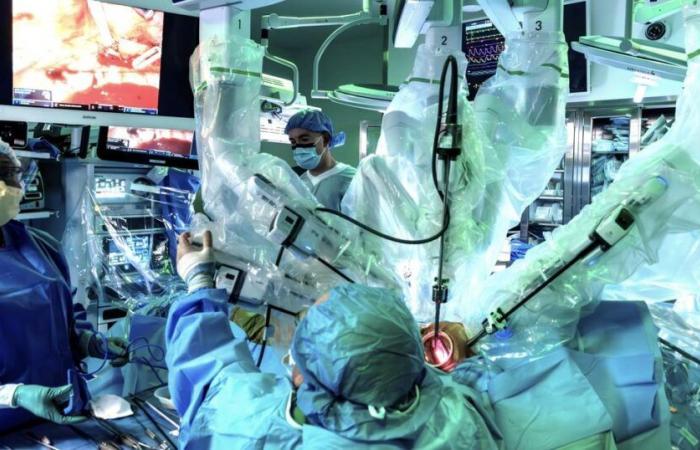DECRYPTION – This revolutionary advance reduces the invasive nature of the operation and accelerates recovery, marking a major turning point in surgery.
A 57-year-old American woman, Cheryl Mehrkar, became, on October 22, 2024, the first patient in the world to receive a two-lung transplant carried out entirely using a robot. Piloted by surgeons, this device has made it possible to considerably reduce a procedure that is usually very invasive. Cheryl Mehrkar had suffered from severe chronic obstructive pulmonary disease (COPD) for a long time, severely reducing air flow to the alveoli in her lungs. For a decade, her condition had been worrying, and it had deteriorated after contracting Covid in 2022. She was finally eligible for a lung transplant.
The transplant with the robot was a success. “ When you’ve spent years breathing poorly and suddenly you’re breathing normally again, it’s an amazing feeling. » testifies the patient in the videos provided by the Langone Health Center of New York University (NYU Langone Health).
Surgical revolution
The robot that enabled this feat of “minimally invasive surgery” is called “Da Vinci Xi”. It is the result of 30 years of development and successive models by the company Intuitive Surgical. It improves the precision, vision and control of surgeons during interventions. “ The robot has four arms: an optical arm which allows 3D vision with a very powerful zoom, and three other operating arms, which have a rotation in space of 360 degrees, which is much superior to the human hand » indicates Dr Stéphane Adjiman, urologist at the Ambroise Paré hospital group in Neuilly who manipulates an identical robot during his interventions. The Da Vinci Xi is in fact not only intended for pulmonary interventions. “ Its use is multidisciplinary, it is now found in thoracic, gynecological and abdominal surgeries. », specifies Stéphane Adjiman.
In Cheryl’s case, a thoracotomy (a surgical procedure involving opening the chest wall to access the inside of the thorax) would have resulted in ” a very large transverse incision of more than 20 cm » says Stephanie Chang, surgical director of the Langone Health Center Transplant Institute. Thanks to the robot, a 5 cm incision is enough. This technique considerably reduces the invasive nature of the operation. “ With the precision of the robot, we manipulate the heart much less, which is necessary in this type of surgery. It will be easier for the patient to recover from such an operation, he will have less trauma and postoperative pain » explains Stephanie Chang.
NYU LangoneHealth
« This latest innovation marks a watershed moment in lung transplant surgery globally and represents the start of a new era in patient care », says Ralph S. Mosca, professor in the department of cardiothoracic and pediatric surgery at New York University School of Medicine. This technological advance, already used in many specialties and for many different cases, illustrates the growing adoption of robots in surgery. Indeed, ” There are few contraindications. We perform at least 500 urological surgeries per year with this robot », explains Stéphane Adjiman. It is even possible that one day “ an AI replaces the surgeon. We’re not there yet, but it’s a possibility », Anticipates the latter.
Health






